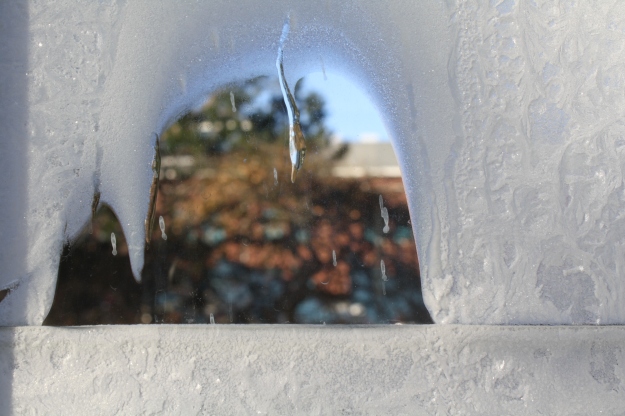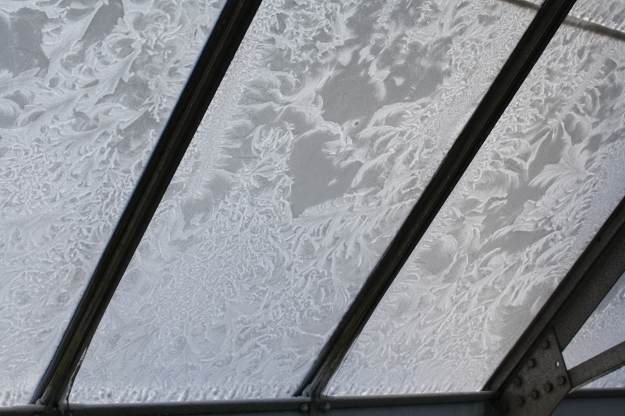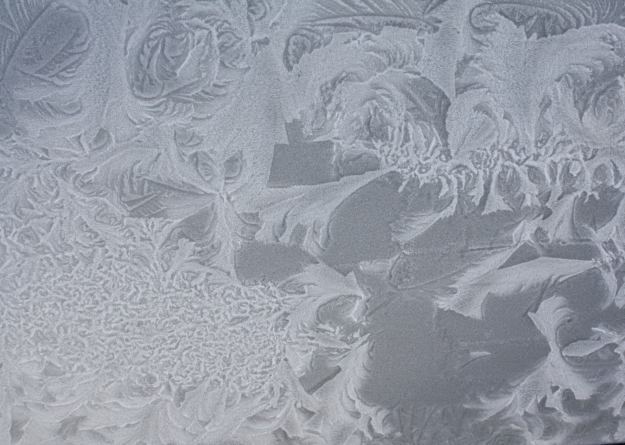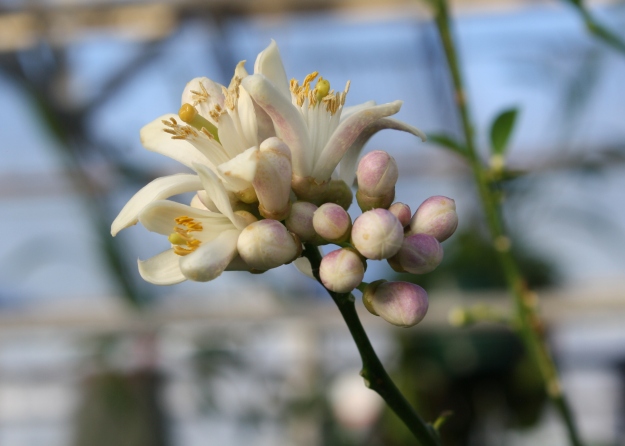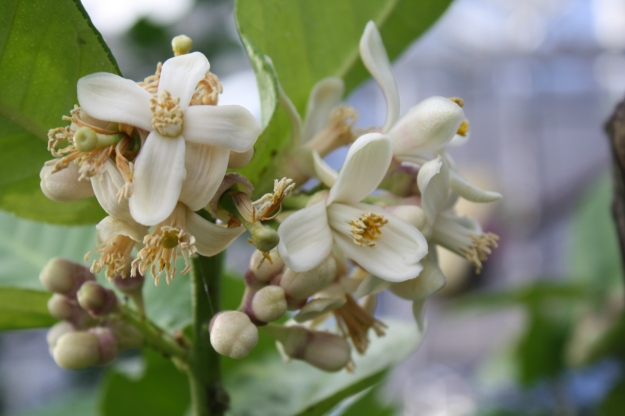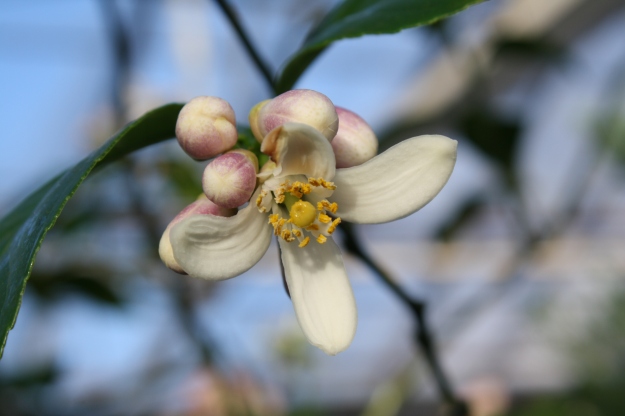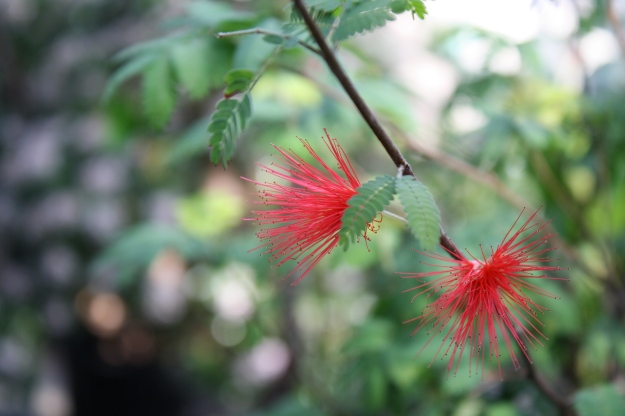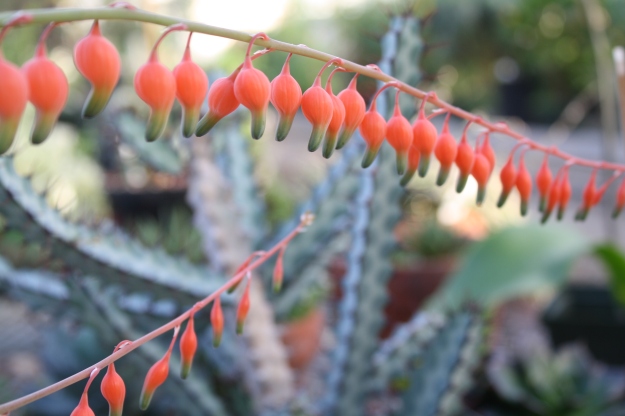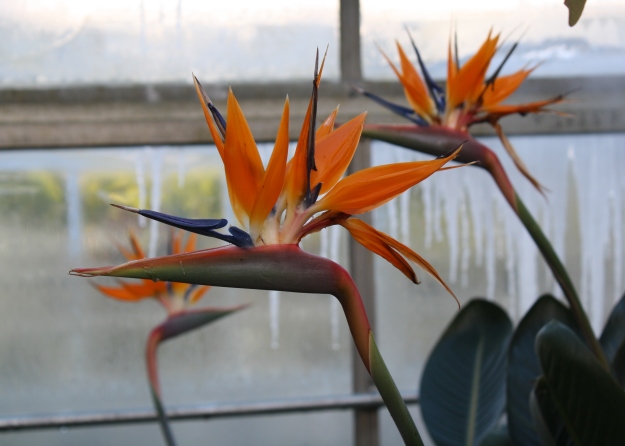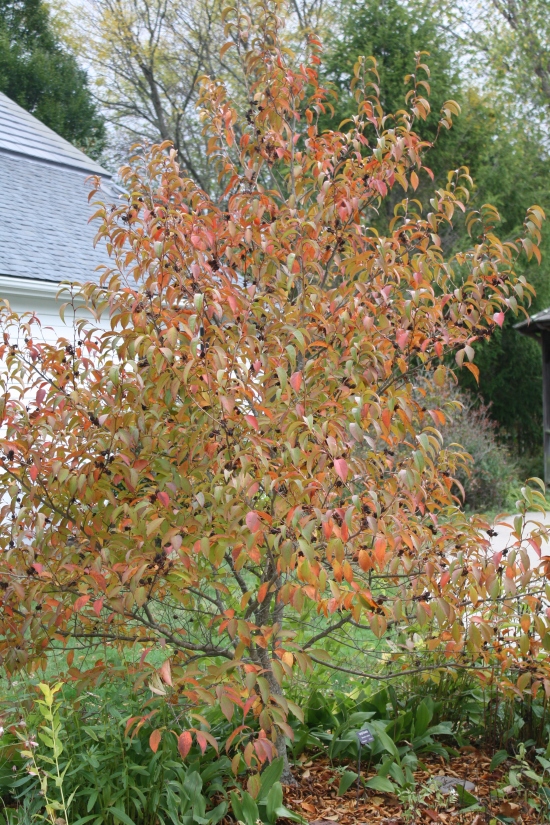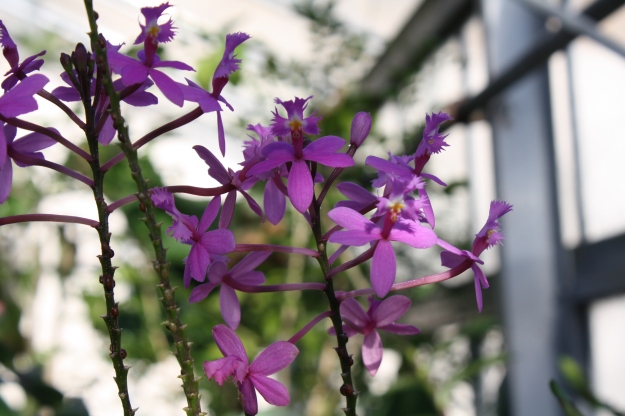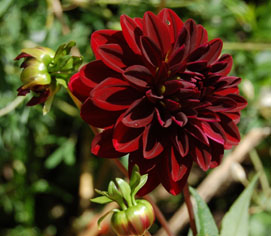
Mammillaria species (Cactus family) in the Conservatory.
The Cactus and Succulent collection at the Horridge Conservatory contains a wide variety of beautiful plants. You may or may not know that a Cactus is a certain family of plants –the Cactaceae. All Cactus are succulents, but not all succulents are Cacti! A succulent is a broad category of plants which have thickened and fleshy leaves and stems, usually to retain water in arid climates and soils. Most succulents come from dry regions of the tropics and sub tropics such as steppes, semi-desert, and desert. High temperatures and low rainfall force plants to collect and store water to survive long dry periods. Many succulents (including Cacti) are grown as ornamentals or houseplants because of their unusual and interesting appearance. Familiar succulents include Jade plants (Crassula ), Aloe plants (Aloe ), or Mother-of-Millions (Kalanchoe).

Gasteria armstrongii in bloom.
Cacti are for the most part native to the Americas, ranging from Patagonia in the South to parts of western Canada in the north. Most cacti live in very dry habitats subject to at least some drought. Cacti show many adaptations to conserve water. Most species of cacti have lost true leaves, retaining only spines, which are highly modified leaves. As well as defending against herbivores, spines help prevent water loss by reducing evaporation. Cactus spines are produced from specialized structures called areoles, which are an identifying feature of cacti. Other types of succulents, such as Euphorbias, have spines but do not have areoles.

Golden Barrel Cactus, Echinocactus grusonii, with Paddle Plant, Kalanchoe thyrsiflora.
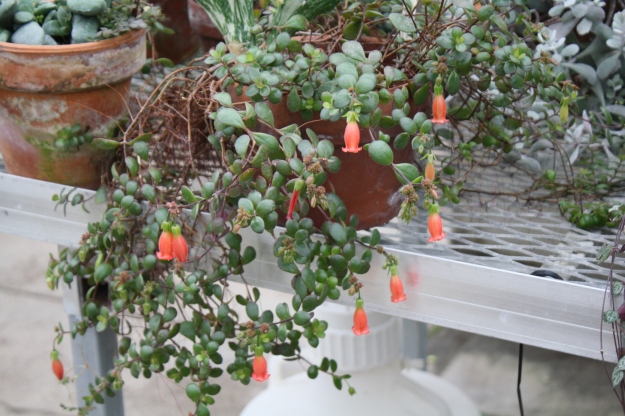
Trailing Kalanchoe
The lengthening days of late winter and early spring is when many of our cactus and succulents bloom, just as in the desert. I love to see them at this grey time of year. Some, such as the Gasteria and Aloe, come in a range of sunset colors (like the Echeveria from this post.) Some are bright pink or purple and others are pure white. If a trip to the Arizona or New Mexico isn’t possible, come visit our little desert at the Horridge Conservatory.

Another Kalanchoe –Kalanchoe gastonis-bonieri

Mammillaria species in bloom.


Two Aloe plants in bloom.

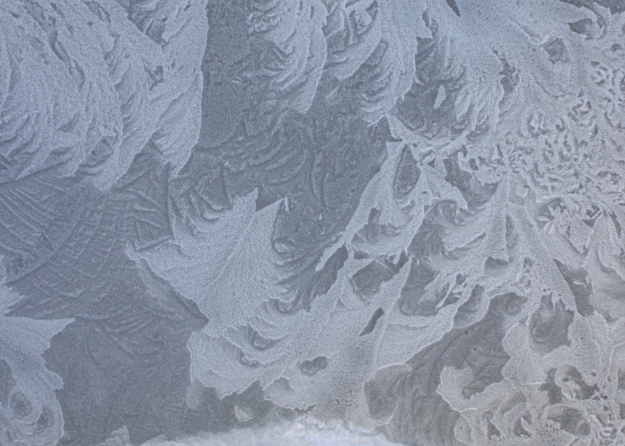 5 F this morning up here at the greenhouse, (0 F down at my house) but bright and sunny. I love the magical, feathery frost patterns that form on the glass inside the conservatory! It’s warm and lovely in the greenhouse, especially when the sun comes out. The grafted citrus tree is blooming, and the scent of orange blossoms is in the air, mixed with the fragrance of the flowering gardenias…heavenly! Since I can only show you the flowers, you’ll have to come in and experience the sweet smells for yourself.
5 F this morning up here at the greenhouse, (0 F down at my house) but bright and sunny. I love the magical, feathery frost patterns that form on the glass inside the conservatory! It’s warm and lovely in the greenhouse, especially when the sun comes out. The grafted citrus tree is blooming, and the scent of orange blossoms is in the air, mixed with the fragrance of the flowering gardenias…heavenly! Since I can only show you the flowers, you’ll have to come in and experience the sweet smells for yourself.
